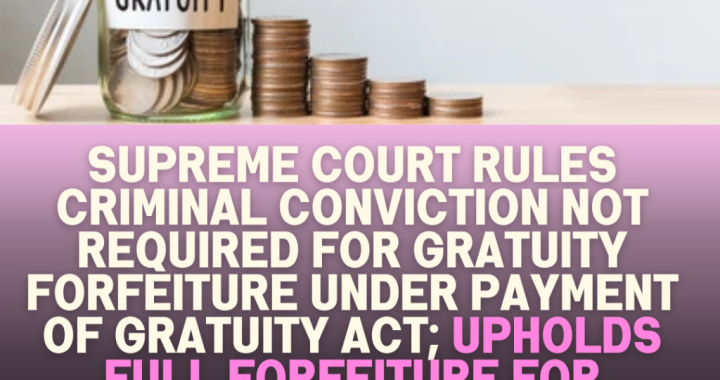Does disallowance of a claim for expenses amount to furnishing incorrect details of income?
 The Income Tax Act aims to protect the interest of the Revenue against furnishing incorrect details of income in the return of the assessee. Many provisions have been made including the penal provisions for concealment of income.
The Income Tax Act aims to protect the interest of the Revenue against furnishing incorrect details of income in the return of the assessee. Many provisions have been made including the penal provisions for concealment of income.
A penalty under section 271(1) (c) of the Income Tax Act can be imposed in situations where the assessee has concealed his true income or has furnished incorrect particulars of his income.
The imposition of penalty should clearly bring state whether the penalty is imposed due to concealment of income or for furnishing incorrect details of income.
Debates arising out of the penal provisions under section 271(1):
In the issue relating to levy of penalty on account of concealment, many issues are presently under debate. It creates a debate as to whether any disallowance represents the concealed income for levy of penalty on account of concealment if the conditions provided in the Explanation 1 section 271(1) (c) are satisfied.
The said explanation shifts the burden of proof from the Revenue to the assessee regarding the concealed income. Such Explanation has changed from time to time and was last substituted by the Taxation Laws (Amendment) Act, 1975 and the Act of 1986.
It may also be noted that it is a settled law that the issue of concealment of income for the purpose of imposing penalty has to be decided on the basis of the law applicable at the time of furnishing return of income.
Practical situations:
In practice if any claim of expenses made in the return of income is disallowed, the authority immediately initiates penal proceedings against the assessee for concealment of income. In many cases if such disallowance or addition is confirmed by the First Appellate Authority, the authority imposes penalty on account of concealment, though it is an admitted proposition that mere disallowance of expenses does not give the presumption of concealed income.
Provisions of section of 271(1) (c) of the Act:
Section of 271(1)(c) of the Income Tax Act provides that in case an assessee has concealed particulars of his income or has furnished incorrect details of his income, a penalty under section 271(1)(c) can be imposed under the Act.
The amount of penalty levied shall not be less than 100% or more than 300% of the amount of tax sought to be evaded by the assessee.
‘The amount of tax sought to be evaded’ denotes the difference between the tax on the income assessed by the tax payer and the tax computed on his actual income.
Precedents dealing with the issue:
In the case of Dilip N. Shroff , 291 ITR 519, it was held by the Apex Court that the order of levy of penalty was quasi-criminal in nature and the concealment of income and furnishing incorrect details of Income denoted a deliberate act on behalf of the assessee.
The Supreme Court expressed the view that mens rea or an ill motive is the essence for invoking penal provisions for concealment of income.
The Apex Court also made many other observations relating to the provisions for penalty on account of concealment of income.
Another Division Bench of the Apex Court, in deciding issues relating to the levy of penalty under Central Excise Act, 1944 and its related rules considered the views expressed in the above referred judgment.
Due to the said judgment of the Division Bench of the Apex Court, the issue was referred to a Bench consisting of three Judges and who considered the effect of this judgment.
The latter judgment was concerned with the imposition of penalty under the Central Excise Act. The Bench did not agree with the view expressed in the case of Dilip N. Shroff. It overruled the judgment of Dilip N. Shroff’s case to the extent that a deliberate act on behalf of the assessee should be established for the levy of penalty for concealment. However the other observations of Dilip N. Shroff’s case for penalty under section 271(1) (c) were held to be good.
In view of the above judgment of the Apex Court, the settled position was again emphasized that mere disallowance of claim for expenses would not be treated as furnishing incorrect particulars of income and penalty on account of concealment cannot be levied notwithstanding the judgment of the Apex Court in the case of Dharmendra Textiles.


 ITAT Amritsar: No Section 269SS Violation for One-Time Cash Payment Before Sub-Registrar
ITAT Amritsar: No Section 269SS Violation for One-Time Cash Payment Before Sub-Registrar  Tax Officials Unleash Digital Dragnet: How New Raid Powers Redefine Privacy, Property Rights in India and likely to Fuel Corruption
Tax Officials Unleash Digital Dragnet: How New Raid Powers Redefine Privacy, Property Rights in India and likely to Fuel Corruption  Income Tax Department Rewards for Reporting Tax Evasion: A Comprehensive Guide
Income Tax Department Rewards for Reporting Tax Evasion: A Comprehensive Guide  Forfeiture of Gratuity by Employer- What are the Remedies for an employee- Can employer be challenged?
Forfeiture of Gratuity by Employer- What are the Remedies for an employee- Can employer be challenged?  Employer can forfeit gratuity of an employee in case of moral turpitude
Employer can forfeit gratuity of an employee in case of moral turpitude  Diving Deeper: The Impact of the New Tax Bill on Dairy and Farming Income
Diving Deeper: The Impact of the New Tax Bill on Dairy and Farming Income